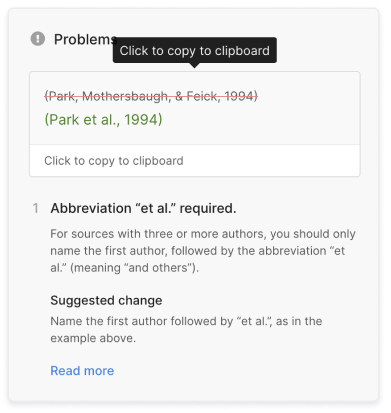Types of Sources Explained | Examples & Tips
Throughout the research process, you’ll likely use various types of sources. The source types commonly used in academic writing include:
- Academic journals
- Books
- Websites
- Newspapers
- Encyclopedias
The type of source you look for will depend on the stage you are at in the writing process. For preliminary research like definitions and broad overviews, you might consult an encyclopedia or a website. For original insights or an in-depth analysis of your topic, you might consult scholarly books and journal articles.
Academic journals
Academic journals are the most up-to-date sources in academia. They’re typically published multiple times a year and contain cutting-edge research. Consult academic journals to find the most current debates and research topics in your field.
There are many kinds of journal articles, including:
- Original research articles: These publish original data (primary sources)
- Theoretical articles: These contribute to the theoretical foundations of a field.
- Review articles: These summarize the current state of the field.
Credible journals use peer review. This means that experts in the field assess the quality and credibility of an article before it is published. Journal articles include a full bibliography and use scholarly or technical language.
Academic journals are usually published online, and sometimes also in print. Consult your institution’s library to find out what academic journals they provide access to.
Learn how to cite a journal article
Books
Academic books are great sources to use when you need in-depth information on your research or dissertation topic.
They’re typically written by experts and provide an extensive overview and analysis of a specific topic. They can be written by a single author or by multiple authors contributing individual chapters (often overseen by a general editor).
Books published by respected academic publishing houses and university presses are typically considered trustworthy sources. Academic books usually include a full bibliography and use scholarly or technical language. Books written for more general audiences are less relevant in an academic context.
Books can be accessed online or in print. Your institution’s library will likely contain access to a wide selection of each.
Websites
Websites are great sources for preliminary research and can help you to learn more about a topic you’re new to.
However, they are not always credible sources. Many websites don’t provide the author’s name, so it can be hard to tell if they’re an expert. Websites often don’t cite their sources, and they typically don’t subject their content to peer review.
For these reasons, you should carefully consider whether any web sources you use are appropriate to cite or not. Some websites are more credible than others. Look for DOIs or trusted domain extensions:
- URLs that end with .edu are specifically educational resources.
- URLs that end with .gov are government-related
Both of these are typically considered trustworthy.
Newspapers
Newspapers can be valuable sources, providing insights on current or past events and trends.
However, news articles are not always reliable and may be written from a biased perspective or with the intention of promoting a political agenda. News articles usually do not cite their sources and are written for a popular, rather than academic, audience.
Nevertheless, newspapers can help when you need information on recent topics or events that have not been the subject of in-depth academic study. Archives of older newspapers can also be useful sources for historical research.
Newspapers are published in both digital and print form. Consult your institution’s library to find out what newspaper archives they provide access to.
Learn how to cite a newspaper article
Encyclopedias
Encyclopedias are reference works that contain summaries or overviews of topics rather than original insights. These overviews are presented in alphabetical order.
Although they’re often written by experts, encyclopedia entries are not typically attributed to a single author and don’t provide the specialized knowledge expected of scholarly sources. As a result, they’re best used as sources of background information at the beginning of your research. You can then expand your knowledge by consulting more academic sources.
Encyclopedias can be general or subject-specific:
- General encyclopedias contain entries on diverse topics.
- Subject encyclopedias focus on a particular field and contain entries specific to that field (e.g., Western philosophy or molecular biology).
They can be found online (including crowdsourced encyclopedias like Wikipedia) or in print form.
Primary, secondary, and tertiary sources
Every source you use will be either a:
- Primary source: The source provides direct evidence about your topic (e.g., a news article).
- Secondary source: The source provides an interpretation or commentary on primary sources (e.g., a journal article).
- Tertiary source: The source summarizes or consolidates primary and secondary sources but does not provide additional analysis or insights (e.g., an encyclopedia).
Tertiary sources are often used for broad overviews at the beginning of a research project. Further along, you might look for primary and secondary sources that you can use to help formulate your position.
How each source is categorized depends on the topic of research and how you use the source.
However, when you are studying potential research bias in scientific journalism, the same article could be used as a primary source, because it provides direct evidence on your topic.
Other interesting articles
If you want to know more about ChatGPT, AI tools, citation, and plagiarism, make sure to check out some of our other articles with explanations and examples.
ChatGPT
Frequently asked questions about types of sources
- What types of sources are used in academic research?
-
There are many types of sources commonly used in research. These include:
- Websites
- Books
- Journal articles
- Newspapers
- Encyclopedias
You’ll likely use a variety of these sources throughout the research process, and the kinds of sources you use will depend on your research topic and goals.
- What is the difference between a scholarly and a popular source?
-
Scholarly sources are written by experts in their field and are typically subjected to peer review. They are intended for a scholarly audience, include a full bibliography, and use scholarly or technical language. For these reasons, they are typically considered credible sources.
Popular sources like magazines and news articles are typically written by journalists. These types of sources usually don’t include a bibliography and are written for a popular, rather than academic, audience. They are not always reliable and may be written from a biased or uninformed perspective, but they can still be cited in some contexts.
- What are the main types of sources cited in academic research?
-
In academic writing, the sources you cite should be credible and scholarly. Some of the main types of sources used are:
- Academic journals: These are the most up-to-date sources in academia. They are published more frequently than books and provide cutting-edge research.
- Books: These are great sources to use, as they are typically written by experts and provide an extensive overview and analysis of a specific topic.
- How do I find scholarly sources?
-
It is important to find credible sources and use those that you can be sure are sufficiently scholarly.
- Consult your institute’s library to find out what books, journals, research databases, and other types of sources they provide access to.
- Look for books published by respected academic publishing houses and university presses, as these are typically considered trustworthy sources.
- Look for journals that use a peer review process. This means that experts in the field assess the quality and credibility of an article before it is published.
Cite this Scribbr article
If you want to cite this source, you can copy and paste the citation or click the “Cite this Scribbr article” button to automatically add the citation to our free Citation Generator.
Ryan, E. (2023, May 31). Types of Sources Explained | Examples & Tips. Scribbr. Retrieved April 15, 2024, from https://www.scribbr.com/working-with-sources/types-of-sources/



